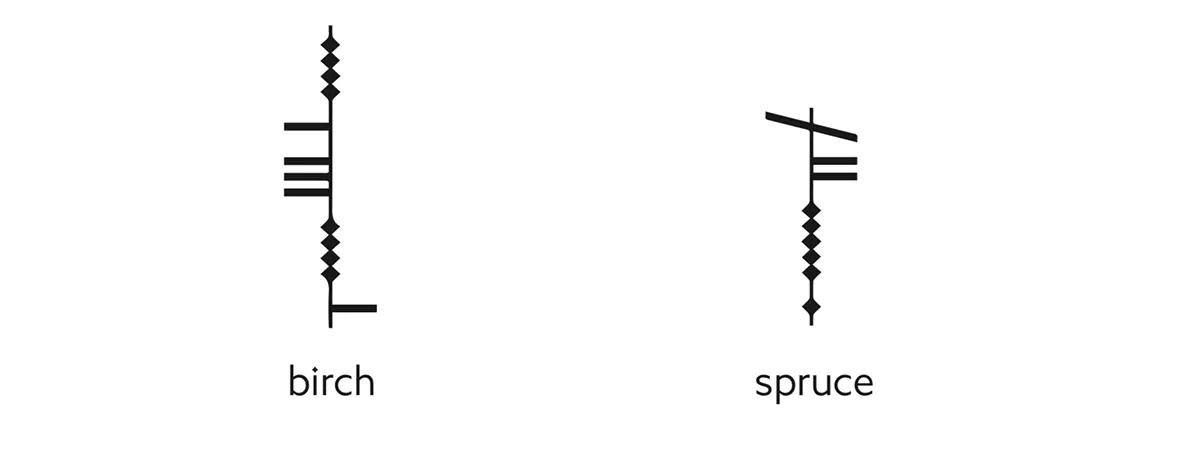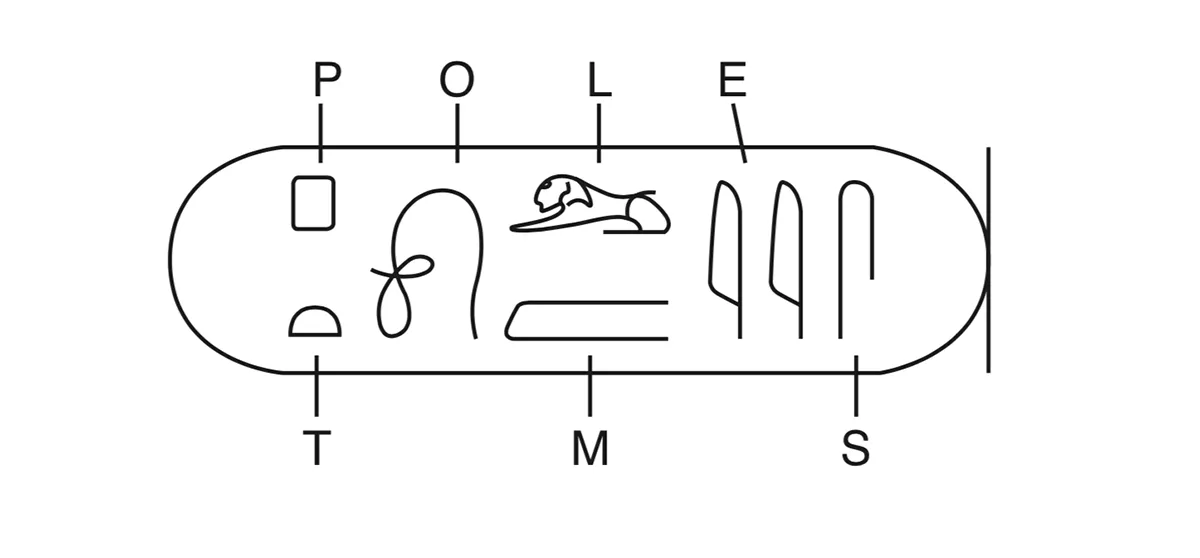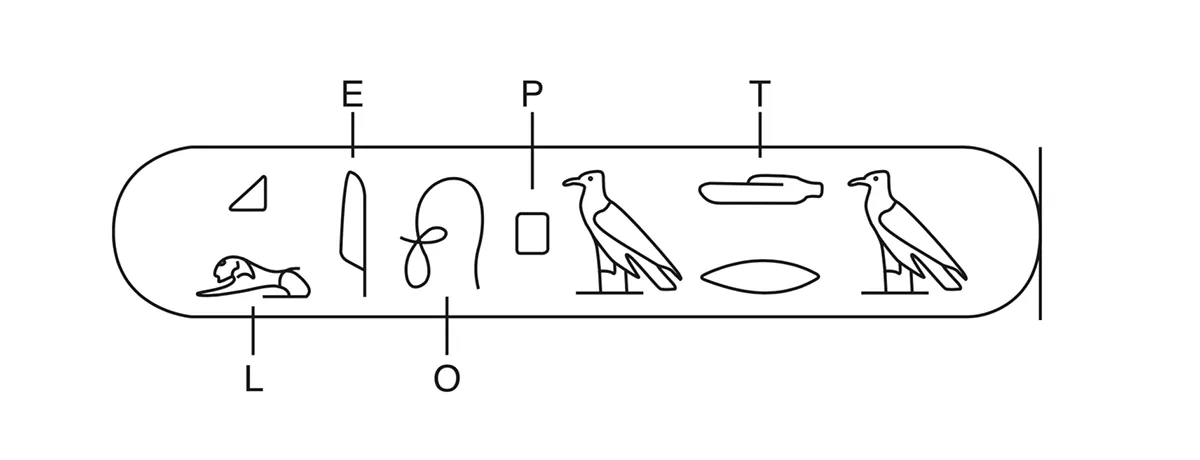Think you're a master codebreaker, expert linguist or a genius puzzler? Then it's time to prove your skills with these brain-teasers fromThe Language Lover’s Puzzle Book byThe Guardian's resident puzzle expert Alex Bellos. You'll need all your linguistic know-how to solve these – unless you happen to know how to read ancient Egyptian hieroglyphics, Irish Ogham and Danish numbers.
Don't worry if you can't crack them all. The solutions are at the bottom – and we won't tell if you peek.
The Bad Translation
In the text below, 20 words have been substituted for alternatives that share a meaning with the original word, but which are incorrect in this context.
For example, in the opening line, the word ‘cross’ has been replaced by ‘angry’, because ‘cross’ and ‘angry’ share the same meaning. In this context, however, ‘angry-legged’ is nonsense.
List the other 19 words that are incorrect translations, and the original words they replaced.
Annie Jones sat angry-legged on her Uncle John’s façade porch, her favourite rag doll clutched under one supply. The deceased afternoon sun polished through the departs of the giant oak tree, casting its flickering ignite on the cabin. This entranced the child and she sat with her confront changed upward, as if hypnotised. A stabilise hum of conversation flowed from inside the cabin.
‘Ellen, I’m really happy that you arrived to church with us today. Why don’t you spend the night here? It’s buying awfully deceased and it will be dark ahead you construct it house.’
‘I’ll be thin, Sally,’ replied Annie’s mother. ‘Anyhow, you know how Steve is about his supper. I departed plenty for him and the boys on the support of the stove, but he’ll want Annie and me house.’
Ogham Sweet Ogham
Ogham – in Irish pronounced ‘ome’, to rhyme with ‘home’ – was a script used in Ireland between the fifth and ninth Centuries. It survives mainly in the form of 330 or so inscriptions on stone monuments, which are the earliest written examples of the Irish language. The alphabet is of huge interest to linguists and historians, and nowadays is a proud symbol of Irish identity (as the tattoo parlours of Dublin and Cork will attest).
Ogham words consist of a vertical stemline with notches or strokes cut across it, like a child’s drawing of a fish bone. Each group of notches or strokes represents an individual letter.
Here are some names of plants in Old Irish written in both Ogham and the Latin alphabet. The English translations are for information only, and do not contribute to the solution of the problem.

Write the following in the Latin alphabet:

Write in Ogham:
nim (ash)
luis (elm)
Sure Sure, Mr Shaw
In the 20th Century, the most famous crusader for sensible spelling was the playwright George Bernard Shaw. When he died in 1950, he left money in his will for the invention and promotion of a phonetic alphabet, stipulating that the letters should be as distinct from the Latin alphabet as possible, so readers didn’t think that the new script was just bad spelling.
Within a few years of his death, a competition for a new alphabet had been launched. One of the four winners, Ronald Kingsley Read (a beautiful example of nominative determinism), amalgamated their entries and named the collective invention the ‘Shavian alphabet’. Almost all the money allocated to spelling reform in Shaw’s will paid for Penguin to publish, in 1962, an edition of his play, Androcles and the Lion, in both the Shavian and Latin alphabets. It is unclear, however, if the Shavian section was ever read.
The list on the left has five phrases that use the Shavian alphabet. The transliterations on the right are listed in random order. Match the phrases to their correct transliterations.

Champers for Champollion
Knowledge of how to read hieroglyphs had been lost for well over a thousand years when, in the early 19th Century, scholars began to try to make sense of them again. The decipherment was achieved in 1822 by the Frenchman Jean-François Champollion, who established that hieroglyphs were a mixed system in which the symbols could represent consonants, vowels, syllables or whole words.
Champollion was able to make his breakthrough thanks to two bilingual inscriptions written in both hieroglyphs and ancient Greek: the Rosetta Stone and the Philae obelisk. (The inscription on the Rosetta Stone is actually trilingual, featuring a third version in another Egyptian hieratic script.)
One feature of both inscriptions was the use of an oval, or ‘cartouche’, containing groups of symbols. Scholars had guessed correctly that cartouches contained the names of Egyptian leaders, and that the pronunciation of those names would be more or less the same in Egyptian as in Greek.
Champollion was able to deduce a name on the Philae obelisk based on a name on the Rosetta Stone. Maybe you can do the same.
The following cartouche from the Rosetta Stone shows the name PTOLMES (Ptolemy).

What is the name in the following cartouche from the Philae obelisk?

The semicircular symbol in the first cartouche and the symbol on the top row between the birds in the second cartouche have the same meaning.
The Knights Who Say Ni
Here are some numbers in Danish:
fire: 4
enogfirs: 81
seksogtres: 66
toogtyve: 22
fem: 5
syvoghalvtreds: 57
ni: 9
nioghalvfjerds: 79
tre: 3
What are the following numbers?
seks, nioghalvtreds, treogtyve, femoghalvfems, toogtres, halvfjerds
What are these numbers in Danish?
7, 54, 21, 85, 99
The Farfar North
The following four words are common to Danish, Norwegian and Swedish:
mormor, morfar, farmor, farfar
The first word can be translated as ‘grandmother’. But usually it means something more precise.
What are the precise meanings of all of these words?
The Colour Purple
Colour blindness – the inability to distinguish colours – affects about 1 in 12 men, and 1 in 200 women. It can be a serious disability. People with total colour blindness struggle with many everyday tasks, from reading traffic lights to choosing the right item of clothing, and from telling the difference between ripe and mouldy food to following the right path on a map.
The Portuguese graphic designer Miguel Neiva devised a labelling system for colour-blind people using black and white symbols to represent colours. The code, ColorADD, is now widely used in Portugal, where you will find it on colour pencils, clothes, metro maps, medicines, indoor car-park levels, recycling bins and traffic lights. ColorADD uses six basic shapes, and can describe 50 colours, from navy blue to gold, and from khaki to light green.
Here are four ColorADD symbols with the colours they represent.

a) Draw the symbols for red, yellow and brown.
b) The four colours below are dark purple, pink, silver and white, but not in that order. Match the colours to the symbols.

c) What are the two possible symbols for grey?
Weasel Words
The following sentence, though bizarre and deliberately confusing, is grammatically correct:
The weasel that a boy that startles the cat thinks loves smiles eats.
Answer the following questions. In some cases, the answers may be ‘nobody/nothing in this sentence’.
- What is the subject of this sentence? (Give a single-word answer.)
- How many verbs are in the sentence?
- Who startles whom or what?
- Who thinks what?
- Who loves whom or what?
- Who smiles?
- Who eats whom or what?
Ixnay on the Upidstay
Language creation seems to fulfil some kind of human urge. Since forever, for example, children have played language games. One of these games, Pig Latin, was popularised in the 1930s by the Three Stooges, and as a result some Pig Latin words have entered the (American English) dictionary. The title of this puzzle, for example, is a line from the movie The Lion King.
Written below, in Pig Latin, are the names of five children’s books:
Arryhay Otterpay Andway Ethay Amberchay Ofway Ecretssay
Atildamay
Ethay Uffalogray
Ethay Ionlay, Ethay Itchway Andway Ethay Ardrobeway
Oodnightgay Istermay Omtay
What are the books’ titles in English?
Solutions
The Bad Translation
Incorrect translation -> Original word
façade -> front
supply -> arm
deceased -> late
polished -> shone
departs -> leaves
ignite -> light
confront -> face
changed -> turned
stabilise -> steady
arrived -> came
buying -> getting
deceased -> late
ahead -> before
construct -> make
house -> home
thin -> fine
departed -> left
support -> back
house -> home
Ogham Sweet Ogham
Each group of notches or strokes represents an individual letter. More precisely, the notches are vowels and the strokes are consonants. The words read from the bottom to the top. All the letters you need for the answers are included in the question, apart from the vowel ‘a’, which you need to deduce. If ‘o’ is two notches, ‘u’ is three notches, ‘e’ is four and ‘i’ is five, then by a process of elimination ‘a’ must be the single notch.
birch -> bethe
spruce ->ailm

Sure Sure, Mr Shaw
- b
- d
- e
- a
- c
Champers for Champollion
You may have been distracted by the images. In fact, proper names in Egyptian hieroglyphs are spelt phonetically. Each figure represents a letter of the Latin alphabet. I mentioned that transcribed cartouches should be read left to right. The Rosetta Stone cartouche reads P-T-O-L-M-E-S. Four of these symbols appear in the Philae cartouche. I also told you that two symbols have the same meaning, which from the Rosetta Stone is deciphered as the letter T.


By filling in the Philae cartouche we get
*-L-E-O-P-?-T-!-?
where *, ? and ! are unknowns. Note that ? appears twice. Think of all the famous Egyptian rulers you’ve ever heard of. The solution is: CLEOPATRA.
The Knights Who Say Ni
seks = 6
nioghalvtreds = 59
treogtyve = 23
femoghalvfems = 95
toogtres = 62
halvfjerds = 70
7 = syv
54 = fireoghalvtreds
21 = enogtyve
85 = femogfirs
99 = nioghalvfems
Here’s how you might have worked it out. If ni = 9 and nioghalvfjerds = 79, it seems fair to assume that -oghalvfjerds describes ‘and 70’. We see similar constructions with og among the other terms, so a reasonable guess would be that og is ‘and’, and that the remaining part of the word denotes the multiple of ten.
That would make: tyve = 20, halvtreds = 50, tres = 60, and firs = 80.
The fact that the word for 60 looks like the word for 3, and the word for 80 looks like the word for 4, leads to the conclusion that this is a base-20 system. Firs = 4 x 20 (four score) and tres = 3 x 20 (three score). But why is halvtreds = 50?
The ‘odd’ tens – 50, 70 and 90 – are considered ‘half way’ from one score to the next. Thus halvtreds means ‘half way to the third score,’ as in ‘half way between 40 and 60.’ Correspondingly, halvfjerds is ‘half way to the fourth score’, or 70, and halvfems is 90, or ‘half way to the fifth score’.
It’s pretty confusing, especially for foreign tourists in Copenhagen, that the word for 50 doesn’t have the word for 5 in it, but instead the words for ‘half’ and 3. Indeed the Danish authorities once tried to introduce regular forms for numbers – femti (50), seksti (60), syvti (70), otti (80), and niti (90) – for bank notes and cheques, but the words never caught on. In 1952 a 50 kroner banknote was introduced that said femti kroner on it. But no one ever said femti, so it was taken out of circulation, and in 2009 was replaced by one reading halvtreds.
The Farfar North
mormor: maternal grandmother (mother’s mother)
morfar: maternal grandfather (mother’s father)
farmor: paternal grandmother (father’s mother)
farfar: paternal grandfather (father’s father)
The Colour Purple
The basic symbols for ColorADD are the primary colours and black
and white.

New colours are created by combining the symbols. Thus red + yellow = orange, and yellow + blue = green.
a) Red and yellow are shown above. Since brown = red + yellow + blue, we get:

b) When the primary colour/s is/are in a black square, the shade shown is the dark version of that colour. And when the primary colour/s is/are in a white square with a black outline, the shade shown is the light version.
Since pink = light red, and purple = red + blue, we get:

The left bracket sign means ‘metallic’, which is why gold = ‘metallic dark yellow’ and silver = ‘metallic grey’.
The order is thus silver, pink, dark purple, and white.
c) Grey is a mixture of white and black, so can be written in these two ways:

Weasel Words
The correct parsing of the sentence is:
The weasel [that [[a boy that startles the cat] thinks [loves smiles]]] eats.
Thus the meaning of the sentence is: The weasel eats. A boy thinks ‘this weasel loves smiles’. That boy startles the cat.
- ‘Weasel’ is the subject.
- Four: ‘startles’, ‘thinks’, ‘loves’ and ‘eats’. ‘Smiles’ is a noun.
- A boy startles the cat.
- A boy thinks that a weasel loves smiles.
- A weasel loves smiles (at least in the mind of the boy).
- Nobody in this sentence (explicitly) smiles; ‘smiles’ is used as a noun.
- A weasel eats something unspecified
Ixnay on the Upidstay
The rule is to take the initial consonant (or consonant cluster, such as ‘ch’ or ‘pl’), move it to the end of the word, and add ‘-ay’. If the word begins with a vowel, add ‘-way’.
Harry Potter and the Chamber of Secrets
Matilda
The Gruffalo
The Lion, the Witch and the Wardrobe
Goodnight Mister Tom
The Language Lover’s Puzzle Book by Alex Bellos is out now (£14.99, Faber).
Try more puzzles: